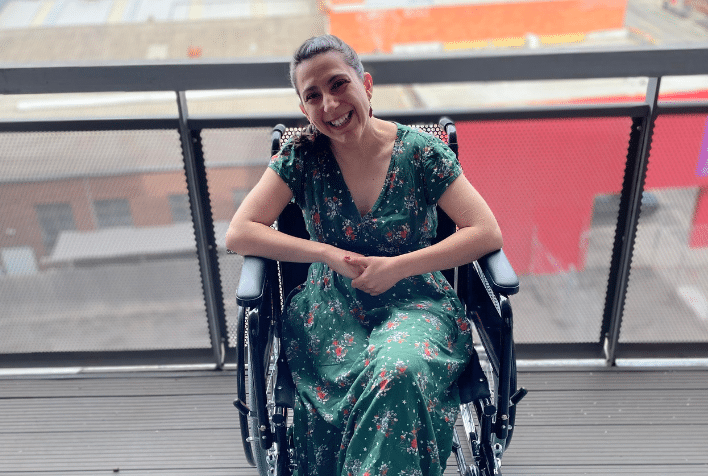
Written by guest blogger, writer and disability advocate, Laura Pettenuzzo
“How can you be so tired? You’re young. I’m older than you. I get up just as early and finish work later than you and I’m not tired.”
I heard this and many other comments for much of my life, from people I knew and some I didn’t. Their cumulative impact was that I learned to doubt my own perceptions. Was I really as tired as I appeared, if I had no reason to be? It was all in my head and, therefore, not real. It was, therefore, something I could and should push myself through, just as anyone else my age would.
But most other people – my age or not – don’t live with cerebral palsy (CP). Most other people don’t have a disability that means they’re exerting 4 to 5 times the amount of energy as those around them on any given task. Until I began to identify as disabled in 2019 and consequently to recognise the ways CP manifested in my life, I wasn’t managing my fatigue at all, and it took a toll on my mental as well as physical wellbeing. I felt so much shame at wanting to reschedule my 21st birthday party because I had tickets to a concert the night before and knew I’d be exhausted. I hated that I fell asleep so early, that I was seemingly capable of so much less than my friends.
But I didn’t realise I was comparing two things that exist on different scales. CP fatigue is more than just feeling a little tired. It’s a bone-deep exhaustion, often accompanied by joint and muscle pain. It’s an inability to physically or cognitively push myself any further. Often, for me, it’s a sleep drive that I cannot fight.
The first step to managing my fatigue was to acknowledge it and accept it. Trying to hold myself to able-bodied standards didn’t help. In fact, it did the opposite. Instead of scolding or questioning myself when I noticed a depletion in my energy levels, I started to remind myself that it made sense for me to feel the way I did, and I rested right away. Slowly, with every act of affirmation, the tendrils of shame around my heart fell away.
The next step has been to understand the factors that contribute to my fatigue and avoid them where possible and manage them effectively where it’s not. For instance, when I’m stressed or in highly emotional conversations or situations, (which trigger my muscle spasms) my energy levels drop rapidly and I usually need to nap afterwards to replenish them. Walking drains my energy, too, though it’s an important way for me to stretch my legs. I use my wheelchair for long distances and stressful events and sit down as often as I can if I’m walking.
I needed to learn my limits through trial and error. I’m still learning and negotiating them every day. I reach out to friends whose disability – CP or otherwise – impacts their energy levels for advice and support, and I try to be gracious with myself about the things I cannot do.
Now, if people question my energy levels, I tell them I have CP. Or I ignore them. It’s not up to anyone else to dictate what I “should” be able to do. It’s up to me to recognise my limits and create a full and meaningful life within them.